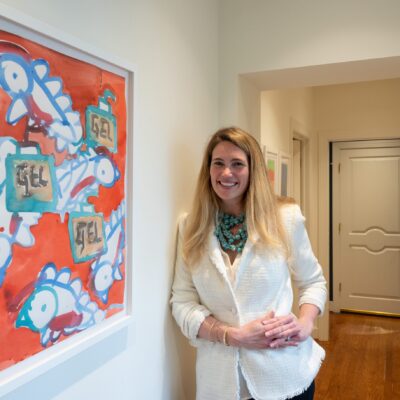Time was, when students at Charlottesville Catholic School wanted to do a science experiment, they’d have to contend with the elements.
“Students would be heating minerals over an open flame,” recalls Principal Michael Riley. “They’d use a Petri dish with an alcohol flame. They’d be doing it outside”—because there wasn’t a properly ventilated spot indoors—“and the slightest breeze would blow it out.”
With the winds of education shifting toward what Riley calls “inquiry-based, hands-on learning,” CCS wanted to equip students to excel in STEM (Science, Technology, Engineering and Math) subjects, and it was clear that the school needed a dedicated facility to do so. Safety was a priority when the school began working on a STEM addition with Train Architects, the firm that has designed each phase of the school since it was founded in the late ’90s.
As planning progressed, STEM turned to STEAM (A is for arts) and then to STREAM, as the new facility would also support R for religion. How? By keeping students’ presentations and performances out of the school chapel. “We weren’t having a sacred space in our chapel,” says Riley. With the addition featuring a dedicated public-speaking room on its lower level, the chapel could be used for religious activities only.
Essentially a long bar extending at a right angle from the rear of the existing school—which serves 330 students in grades kindergarten through eight—the addition sits on a slope that necessitated two stories. The upper floor contains two STEM classrooms connected by a central core, housing much-needed storage space and a fume hood for ventilation.
The classrooms, meanwhile, are modeled on typical high school chemistry classrooms, divided into lecture and experiment areas. Kids can listen to their teachers explain a concept, then move over to small-group workstations to look through a microscope and see science for themselves.
Architect Kirk Train says his firm’s aesthetic task was to make the addition conversant with, but clearly differentiated from, the older portions of the school. “Kids will understand that this is special, this is different,” says Train.
Subtle cues signal a shift when students pass into the STREAM wing. The window pattern gradually “breaks down,” Train says, as one moves further into the addition, as does the pattern of brick and concrete block on the addition’s exterior. “We kept a simple vocabulary and rhythm,” says Train.
The floor, too, changes from linoleum to concrete, an economical and green option.
Two new stairwells ease student traffic to and from the lower-floor lunchroom, and their railings are crayon-red to signal a place of movement. Warm brown walls and cherry ceiling panels delineate the “lobby” within the addition, where an elevator, stairwell and hallways come together.
The new performance space—located next door to a sound-dampened music classroom—features a low stage under a sloped ceiling, a clear sign to students that when they’re standing there, it’s time to speak up, something that might have been counterintuitive in the chapel. “If they have a part that’s loud or funny,” says Train, “they can do it and not feel restrained.”





